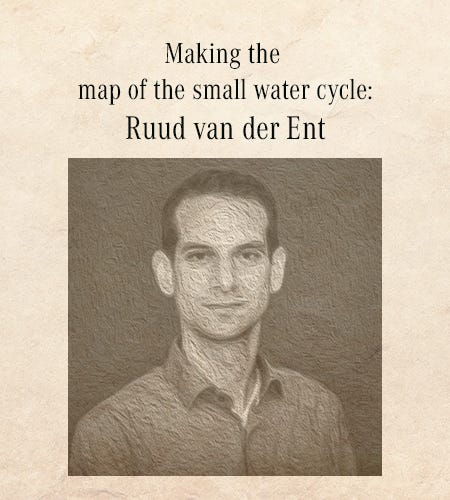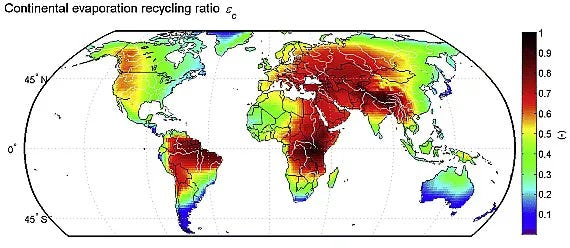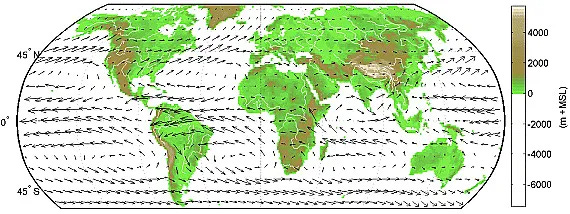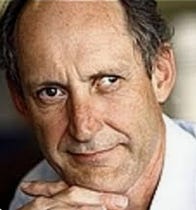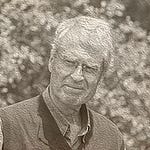Where does the evapotranspiration that rises from forests and grasslands come back down as rain? This was the question that Ruud van der Ent asked as a hydrology graduate student. He wondered if he could make a map of the world that would show this flow of moisture around the world.
Van der Ent worked with his professor, the renowned Hubert Savenije to make this map. They published this in a paper called “Origin and fate of atmospheric moisture over continents”. Their map has been quite influential and attracted quite a lot of attention. One of the most popular articles in this newsletter has been on their work.
This is the map they made. It shows where evaporation that goes up, will become rain again on the same continent. Red areas means 60%-80% of the evaporation that rises from that area will come back down as rain on that continent. So you can see that a lot of the evaporation rises from the west coast of North America, will come back down as rain somewhere in North America. A significant amount of the evaporation from Brazil and the Amazon rainforest, will come back down as rain somewhere in South America. Much of the evaporation from Congo and East Coast of Africa will come back down again as rain somewhere in Africa. Much evaporation in northern India and western China will come back down on the continent.
This is a map they made showing the origin of rain. It shows the amount of rain in that area that came from evaporation off the land. So in the Rockies in the US, you can see that a lot of that rain there originated as land evaporation. In northern China, you can note that a lot of the rain there came from moisture that evaporated off the Eurasian continent.
I was really happy when I managed to track down Professor Ruud van der Ent, and he agreed to do this interview. Below is an edited excerpt from the interview.
Alpha: When you were doing your Master's, was that when you first met Hubert Savenije?
Ruud: Yeah, he was a professor in hydrology, a very inspiring person, very enthusiastic, full passion for hydrology and how things work. In one of the courses that I took, we had to read papers. I think the majority of the papers we had to read were his own papers.
He did some work in the 90s on moisture recycling in the Sahel. He developed his own approach to the question of where does the rain come from and how much of the evaporation comes back to the land surface. Savenije took the perspective of let's follow the trajectory of moisture and then calculate along that trajectory how much is being recycled.
His estimates were rather kind of surprising to me, eye-opening. As you go from the coast of West Africa up north into the drier parts, the amount of precipitation in those drier areas that stems from land sources is actually greatest. So they have a region which actually depends on the land for rain.
When he did his moisture recycling equations in the 90s, the computational power was much less than we have today. Also open data was also much harder to access. You couldn't access the big climate mobile data sets, reanalysis data sets that we can access now. So he did it all with analytical equations.
I said, I want to pick up this research for my Master thesis.
Alpha: Savenije was very much his own independent thinker, right? He was positioned in Africa during his early days. And because there was no internet back then, he had to figure out everything himself. He was trying to figure out this whole precipitation recycling thing. Around that time researchers had just discovered that the sea surface temperature seemed to correlate with the droughts in the Sahel in Africa, and so these researchers thought most of the rainfall was due to the oceans. But then Savenije plotted the amount of rain as you move inland, and he found the rain didn't go to zero. It would have dropped off to zero if precipitation was only due to moisture from the oceans. So he figured out that the land moisture was creating precipitation.
. [Hubert Savenije]
Ruud: I think sometimes, maybe its a blessing, you know, back when we did not have access to all the information on the internet, because you spend more time actually thinking about your own theories and develop your own methods, which is pretty cool.
People also find it very difficult to kind of get their head around that there's moisture coming from Europe that could contribute to rainfall in the Sahel because how's it possible that the moisture crosses the Sahara? There is no rainfall there. There's no rainfall there, but there is still there is still moisture in the air, right? It still crosses the desert. And that's really amazing.
Alpha: Yeah, it just doesn't reach the dew point to rain out over the desert.
Ruud: Exactly. Yeah.
Alpha: Savenjie came up with this idea of quantifying the amount of moisture recycling or precipitation recycling by how much it came back down on the same continent. He was saying the amount of water that transpires off the continent, that then comes back down on the continent is the best way to measure the moisture recycling ratio.
Ruud: Yeah, so there's also been a bit of a discussion where people were we just draw a box and we calculate how much recycles within the box. His point is that close to the coast, there is not a lot of moisture recycling. The further you go inland, the more recycling you get .
Alpha: So he was talking about this in class when you were in class. And did you somehow think, you want to take one of these ideas as a stimulus for your research?
Ruud: Yeah. I did a bit of searching on this moisture recycling topic. A lot of Amazon work pops up. But I had the feeling the global picture is missing. I just wanted to know what the global picture of moisture recycling looks like.
And that's why I said, okay, I want to pick up this moisture recycling work. There was also a lot of other literature on this. I think I had a very unusual approach to to to my research compared to to a lot of students in my own class or the kind of students that I see doing their their thesis. They spend only a tiny amount of time on the literature review and and and want to immediately dive in do calculations. I spent like two three months, just reading. If I want to push the edges of what is known, I felt I should first have a complete understanding of what is known about this topic.
Alpha: Was this for your Master's topic or for your PhD?
Ruud: For my Master's. But the Dutch is a bit different than the American system and in our system you really have to finish your master's before you could start a PhD. For my master thesis I got such interesting results that Savenije said - I have some funding available, do you want to turn this into a PhD? I very quickly had my first paper and then this turned into a PhD.
Alpha: When you're choosing your topic in your Masters you don't want to choose something that's too ambitious because you only have like one or two years right. Were you worried that this was a very ambitious topic when you were looking at it?
Ruud: Yeah. Yeah, I was worried a little bit because what if things are complicated? But I also thought maybe this is the only time in my life that I have a significant amount of time that I can default to what drives my own curiosity.
Alpha: Did you have to learn some of this climate modeling because you were in hydrology?
Ruud: Yeah, for sure. I taught myself along the way. I was doing a kind of a bookkeeping approach of the atmosphere. I learnt from friends and colleagues in the the moisture cycling field that had more meteorological background. Sometimes I would teach them about hydrology and and and the land surface and how those things work.
Alpha: So how exactly do you calculate how much evapotranspiration is happening off the land? How did you figure out where that water went? Do you run a climatological model?
Ruud: My work is running a moisture tracking model. But it's not a model. Well, I need a model but it's reanalysis data. So there are data based on global weather models that are updated with global observations of the weather so they provide a best estimate of what we have globally of historical weather which provides precipitation, evaporation, humidity and wind at different levels in the atmosphere.
I do a bookkeeping approach, keeping track of what comes in and out. I think a nice analogy is that of a dye. So suppose you have a tank of water and you put the dye in there and this is also what we do in the moisture tracking model. We put a dye - but I mean the dye is a label that you put in numerical code but essentially you put a dye. I want to know from this specific area where does the water comes from. You label that water and track it through the atmosphere.
The tracking happens offline, that's how climate scientists call it. So offline meaning that you already have a run of the climate model that gives you the raw data on the fluxes and the exchanges of the water, and then I just take out the relevant input and output fluxes and then, not running the climate model, but really running only the bookkeeping or the moisture tracking part. I do not - we do not alter the total fluxes, we just say okay well we are particularly interested in the precipitation here or the evaporation there.
[This is a reader supported publication. Your help keeps this going.]
Alpha: Okay cool so what were some of the results you found?
Ruud: What was most striking to me personally was eastern Asia, China specifically. I thought China is close to the coast, so probably they receive most of the rainfall from oceanic sources. But actually we found that in some specific regions in China, like the Tibetan plateau, up to 80% of the rain that falls there comes from evaporation locally or in the Eurasian continent in general. So the recycling there was so high, it was not something that I anticipated beforehand.
I think a very relevant part is the Amazon. I'm not the first one that found this, there are several studies before, I've just shown it in a slightly different way. The case of the Amazon, especially the northern part of the Amazon providing water through atmospheric moisture recycling, providing rainfall for the western part and the southern part of the Amazon, but also providing even further than that. The big agricultural areas of Brazil actually rely for a large part of their rainfall on the Amazon.
The most worrying part, we all know the ongoing deforestation, which is already bad in itself, but now a big part of this is it reduces rain. I mean the whole idea of the deforestation is to increase agricultural productivity there right? I mean that's the goal. Due to cutting trees, which leads to less transpiration, this may actually backfire.
Alpha: Right it's very unfortunate. The food production depends on the forest but they're cutting down the forest to produce more.
Ruud: So it is a feedback loop. It's a very negative story.
Alpha: And then it also affects the rain in countries south of Brazil too right?
Ruud: Yeah, also Argentina, Paraguay, Uruguay. Colombia also.
..
Ruud: One of the things water managers are focused on is this river flow because you can see it is a reliable source. But we only do this because we cannot rely on the precipitation itself. But that is in general the source of all water resources.
Alpha: So one of the ways to increase water for agriculture is actually look to increase rain by restoring land.
Ruud: If you just look at this from the moisture recycling perspective, you know that the water travels hundreds or thousands of kilometers so if you restore land in a particular area then maybe this benefits other areas but not necessarily the area itself.
Alpha: Right, that's where transboundary agreements come in. Lot of rivers already flow through different countries, and countries make transboundary river agreements. Some researchers are now looking at how different countries should make transboundary agreements about the atmospheric water too.
Ruud: Yeah, true. I'm also involved in some of that work. I suppose that the research community has figured it out that that should really happen. It’s not my specialty. I would guess that maybe the road to the policy table is still a bit of a long one.
Alpha: Yeah, it's like, first people have to even be aware that this is an effect.
Ruud: Yeah. And I think more and more people are becoming aware of it. I mean, these things have also been mentioned in policy briefs mentioning these things. So, there are people definitely aware of it. But yeah.
Alpha: You wrote a paper on on Kenya. You said 75% of Kenya's rain, or Africa's transpiration comes back down in Africa, right? And 15% comes back down in Kenya. So Kenya has some effect on its own rain, but then it has the Congo and Tanzania which is downstream.
Ruud: Yeah. People that are wanting to manage transboundary rivers would probably already affirm that it's already quite hard to make agreements between countries on the river flow. And then, if we're talking about atmospheric water flow, which is part of an invisible process, it may be hard to have some agreements on there. My hope is that big countries like Brazil, China, the United States, where they don't need this transboundary water management - if those big countries start realizing it, then this may trigger them to have specific policies on it because they want to keep the atmospheric water cycle functioning. This may then also trigger other countries, which are involved in this transboundary part, to start taking it into the agreement process.
Alpha: The US is big, right? So we're in the Southwest of the US, we have the Colorado River. It's supplying water to seven different states. It's a big deal that it's drying up. But people are not looking at how land use affects rain, which then affects the Colorado river.
Ruud: Yeah, so it's up to you and other US researchers, like Pat Keys and Francina Dominguez, to try and get this on the policy table in the US.
Alpha: You worked with Pat Keys. He's at Colorado State. He did work that showed that for 19 out of 29 cities, if they restore some of their land use, their local land area will affect a third of their precipitation. There are a number of big cities in the world that can have a significant effect on their own rain, without needing transboundary agreements.
Ruud: There is lots of great work being done on how cities affect precipitation. But probably also still too little. Cities also emit heat, they have a different albedo, so it's not just that they evaporate less moisture.
Alpha: What is the percentage that land affects the rain in the world?
Ruud: In the world, it's about 60% of land evaporation that goes up comes back as precipitation on land. 40% of the precipitation comes from land evaporation.
There are areas where this can be much higher - Central South America, the East, or the Center East of the United States, China, big parts of West Africa and the Sahel where that number is much higher. So there's like 60-70% of the rainfall that comes from land-based moisture recycling. For the west coast of the US about 70% of the water that evaporates there comes back down elsewhere in North America.
…
For more info see Dr. van der Ent’s page at Delft University, and his list of publications here.



